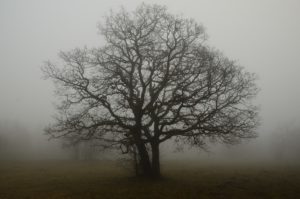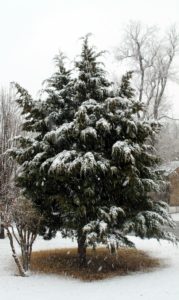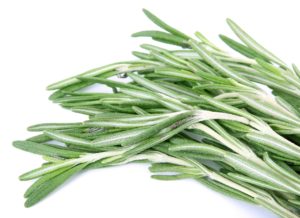Summer
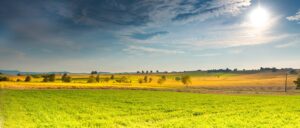
Solstice has come and gone, and now the sunlight fades a little earlier each day. The Motherwort in my garden is spent, and the Monarda’s stunning purple falls away. In the rhythms of life, of the earth, summer brings us to the hot, bright spot on the wheel of the year, where Goldenrod, Poke and Sunflowers ready their buds in the heat.
Summer corresponds to other rhythms as well: Noon, and the full moon, when energies are high and dreams are born. This is the time of fullness, as the land brings crops and plants into readiness for a harvest to come — by us, and by birds and animals who already dine on the bounty of my juniper berries and hollyhock seeds. It is the time of high activity, creating, and exuberant life.
But what a different summer this is. There is a surreal overlay as the stress of uncertainty features in the ongoing days, and loss and the constant need for adjustment take their toll. How do we navigate the time before us? The same way humans have always navigated difficult changes in their circumstances. We will pause, and assess, and learn, and create new options. But now, in the middle of a global pandemic, on the edge of a longed-for social justice revolution, faced with mounting loss of loved ones, jobs and income, it feels as if the overwhelm may not end. In this moment, self care and compassion become the greatest gifts you can give yourself. Finding or creating time to feel safe, loved, and at peace is a critical strategy of self care. As you do this, aligning with Earth Rhythms and our common herbal allies are powerful gifts.
Ease
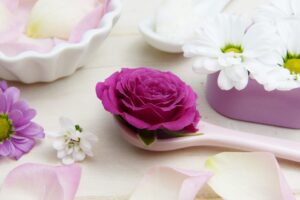
Faced with overwhelm, it’s important to first disconnect from the what’s causing it — even if just for a few minutes. This is like pulling away from a hot pan that you have touched. It removes the source of the damage, so the skin can cool, and heal. The healing is deeper if you will choose to:
-
-
- Put the phone away
- Give yourself permission to set aside all the worrying thoughts just for that time, and insist that they be still. (Tell yourself that you can come back to them, but this is your time to disengage.)
- Give yourself completely to whatever you are doing.
Sunlight
Your body makes the critical hormone we call Vitamin D using sunlight. Without it, body repair slows down; and depression, lethargy and a sense of distress usually increase. Outside the summer is going on. What about taking some special time each day to ground, and root yourself deep into the earth? Morning is a great time, not long after you wake up. Energizing sunlight right then helps set the body’s rhythm for falling asleep at night. Just stand barefoot on the earth and see your energies going going, like roots, deeper and deeper into the earth’s core. Both the physical touch of feet on earth and the visualization are powerful.
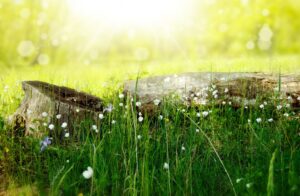
And that bright noon sun! Try sitting or walking outdoors for at least 30 minutes between 11 AM and 1 PM each day. Breathe in the sunlight, and see it invigorating every cell in your body. Watch puffy clouds if you have them, and free yourself from everything external, to connect deeply with the world around you. It’s a meditation in itself, and so nourishing!
Herb Bathing
Take an old sock that it’s okay to stain, a large muslin bag, or a square foot of cotton, and fill it with an herb for a soothing bath. Tie it off in whatever way works, and set 1-2 quarts of water in a pan to boil. When the water comes to a boil, turn it off, and add the sock or bag full of herb. Poke it down with a chopstick to help it become saturated, put a lid on, and wait 30-40 minutes. In the meantime, draw a warm bath, and light a candle or two in the bath room, if you’d like. (Time it to be ready when your herbs are done.) When they have steeped, make sure your closure on the bag or sock is really tight, then pour the whole pan, herbs and all, into the bath water, and join them! Breathe deeply and enjoy the down time.
Herbs I love for this are Mugwort (cooling, so good if you’re hot natured, and can promote dreaming), Lavender buds or leaves (Ahhh, my favorite!), Rose buds, and Calendula. (If you have dried or fresh Calendula flowers you can just throw them loose in the tub, and watch them expand and drift, but you’ll need to skim them out with a big strainer before you pull the plug!)
Tea for One — A Ritual
This is a ritual of self care, that begins with connecting with a plant. Choose a tea for it’s aromatic, or enlivening, or soothing properties, and consider it for a moment. What draws you to the plant that this comes from? Boil some water in a pan or teapot, and select a lovely place to drink it where you will not be disturbed. That could be at the table, or on the porch, or on a blanket in the grass. Be inventive! Set your place with a teapot and cup; put tea in your vessel to steep, and pour the water when it’s ready, straining if needed.

Notice everything that you can about the tea: The warmth and smell of the steam, the initial color of the tea and how it changes, the smell of the herb. Enter a meditative space for 3-5 minutes while the tea steeps. Pour your tea, noticing it’s fragrance and color. Sip, and explore the taste. Is it bitter? Astringent? Tannic? Sweet? What else? Breathe deeply and let your thoughts be calm and flowing as you enjoy your tea and your sacred space.
My favorite uplifting teas for this are Black or Green tea with Clove, Orange Peel and Cardamom. (The spices are warming, so use less, or try honey instead if you are hot natured.) My favorite relaxing brews for this are Chamomile, Linden, Hawthorn and Lavender.
Flow
When the nervous system is nourished and supple, it’s easier to flow with life. Some herbal allies have a gift for nourishing and soothing the nervous system from  within. To make any of these herbal infusions, use 1/4 to 1/2 cup of herb* to a pint of water. Plan to let it steep for at least 4 hours, up to overnight. Several of these are really bitter (and that’s part of the medicine!), so adding honey or stevia is fine. As you drink them, be sure to tune in to their taste and energies.
within. To make any of these herbal infusions, use 1/4 to 1/2 cup of herb* to a pint of water. Plan to let it steep for at least 4 hours, up to overnight. Several of these are really bitter (and that’s part of the medicine!), so adding honey or stevia is fine. As you drink them, be sure to tune in to their taste and energies.
* Exception: Marshmallow. Instructions are below.
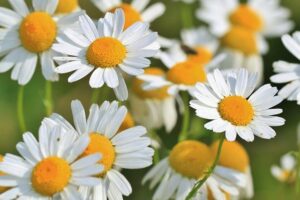 1. Chamomile (Matricaria recutita) An antispasmodic, anti-inflammatory and gentle calming herb. Also a digestive bitter, so it’s great if anxiety unsettles the stomach. Try a strong pint, divided into 3 doses 20 minutes before meals during the day for daytime calm and to sleep easier at night.
1. Chamomile (Matricaria recutita) An antispasmodic, anti-inflammatory and gentle calming herb. Also a digestive bitter, so it’s great if anxiety unsettles the stomach. Try a strong pint, divided into 3 doses 20 minutes before meals during the day for daytime calm and to sleep easier at night.
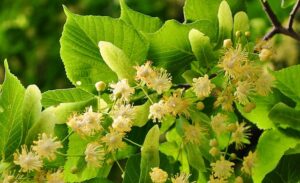 2. Linden (Tilia europea) I love this herb! A lovely ally when the stomach is nervous, blood pressure goes up from anxiety, and overwhelm creeps in. It can ease grief, and relieve heart inflammation. I make a strong infusion to drink on many days, and use it as a weaker tea for my tea ritual (above) just so I can just smell it. I’m convinced this is one of the gifts of the fey to us for times of change.
2. Linden (Tilia europea) I love this herb! A lovely ally when the stomach is nervous, blood pressure goes up from anxiety, and overwhelm creeps in. It can ease grief, and relieve heart inflammation. I make a strong infusion to drink on many days, and use it as a weaker tea for my tea ritual (above) just so I can just smell it. I’m convinced this is one of the gifts of the fey to us for times of change.
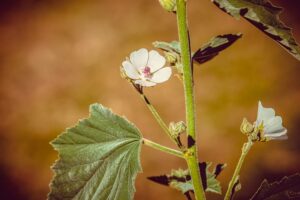 3. Marshmallow (Althea officinalis) Such a soother! It is demulcent, anti-inflammatory, wound healing, and more. When we become dried out from summer heat, so does our nervous system. Drinking a demulcent tea on a regular basis can bring flow, and counter depression and sleeplessness. This one is easiest to make: stir a 1/2 teaspoon powdered herb into a pint of filtered water at room temperature. Let it sit for 4-8 hours, strain, and drink all day as a beverage. It will have a slightly thick consistency, and you want that! You can even leave the powder in the jar and stir it well before you drink. Did I mention? — It’s a nutritive tonic, as well.
3. Marshmallow (Althea officinalis) Such a soother! It is demulcent, anti-inflammatory, wound healing, and more. When we become dried out from summer heat, so does our nervous system. Drinking a demulcent tea on a regular basis can bring flow, and counter depression and sleeplessness. This one is easiest to make: stir a 1/2 teaspoon powdered herb into a pint of filtered water at room temperature. Let it sit for 4-8 hours, strain, and drink all day as a beverage. It will have a slightly thick consistency, and you want that! You can even leave the powder in the jar and stir it well before you drink. Did I mention? — It’s a nutritive tonic, as well.
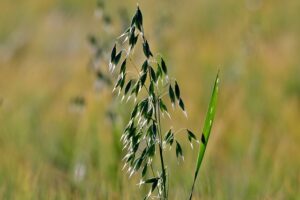 4. Oats (Avena sativa) This is a nervine tonic, and considered a longevity drink in the Ayurvedic tradition. Drink a pint of strong infusion a day as a beverage for as long as you want, to add a soothing flow to nerve energy. It’s B-vitamins, minerals and saponins are wonderful nourishment for the nervous system.
4. Oats (Avena sativa) This is a nervine tonic, and considered a longevity drink in the Ayurvedic tradition. Drink a pint of strong infusion a day as a beverage for as long as you want, to add a soothing flow to nerve energy. It’s B-vitamins, minerals and saponins are wonderful nourishment for the nervous system.
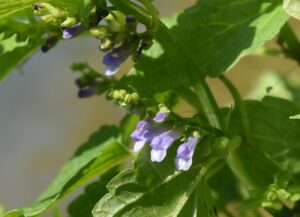 5. Skullcap (Scutellaria lateriflora) A supreme nervine tonic, that imparts a regenerative effect. It is notably calming, and perfect to use before doing any of the other interventions above. You can use the 1/4 cup amount long term for extended nervous tension and nervous exhaustion during the day, and benefit from easier sleep at night. Reduce to 2-3 Tbs if 1/4 cup makes you sleepy.
5. Skullcap (Scutellaria lateriflora) A supreme nervine tonic, that imparts a regenerative effect. It is notably calming, and perfect to use before doing any of the other interventions above. You can use the 1/4 cup amount long term for extended nervous tension and nervous exhaustion during the day, and benefit from easier sleep at night. Reduce to 2-3 Tbs if 1/4 cup makes you sleepy.
“Side-Flowered Skullcap” by pchgorman is licensed under CC BY-NC-SA 2.0
This time calls to us to bring our gifts of creativity and love to the front, to heal what can be healed for ourselves, each other, and the planet. It is the Change Time, and our gifts are needed. Our Allies are here for us, and we can be here for the world, if we give ourselves the care we need to nurture strength and resilience. May this sharing help you thrive, and may you be well. — Joan
Joan is offering support online at reduced rates for those who want help navigating the stress of these times. Contact her here for a free phone consultation to learn more.
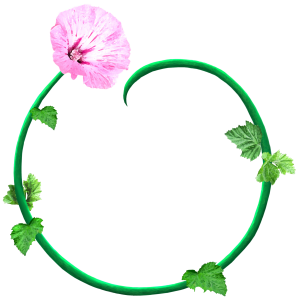
If you would like to learn more about herbal lifestyles and reweaving your connections with earth rhythms, click here to visit Joan’s events page, and be sure to sign up for her newsletter.
She will be adding virtual events soon,
and any delays or cancellations in previously scheduled events
will be noted as they occur.
You can follow her on facebook here.
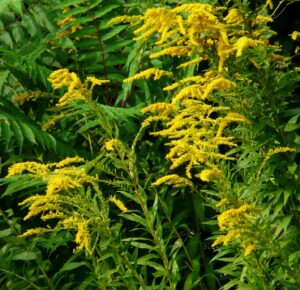 In August I am watching Goldenrod, for the first buds that tell me it’s ready to share it’s exuberant goodness with those who are supporting urinary tract health and mitigating allergies. Our most common species is Solidago canadensis, but most of the Goldenrods will work well in conditions of bladder concerns, achy kidneys, edema in the feet, and seasonal itchy nose.
In August I am watching Goldenrod, for the first buds that tell me it’s ready to share it’s exuberant goodness with those who are supporting urinary tract health and mitigating allergies. Our most common species is Solidago canadensis, but most of the Goldenrods will work well in conditions of bladder concerns, achy kidneys, edema in the feet, and seasonal itchy nose.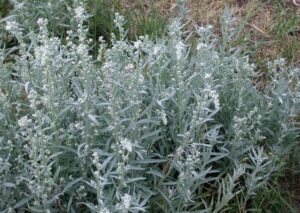 The energy of our Mugwort, Artemisia ludoviciana is so heady right now that it induces a sort of giddiness, leaving me near to surrendering to a porch swing in my garden to just revel in it. Mugwort is known for facilitating dream work, and dreaming surrounded by the puffy white clouds of the not-so-hot mornings in the Dog Days of summer does not seem like a bad thing.
The energy of our Mugwort, Artemisia ludoviciana is so heady right now that it induces a sort of giddiness, leaving me near to surrendering to a porch swing in my garden to just revel in it. Mugwort is known for facilitating dream work, and dreaming surrounded by the puffy white clouds of the not-so-hot mornings in the Dog Days of summer does not seem like a bad thing.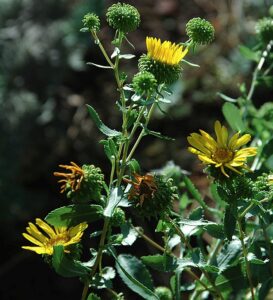
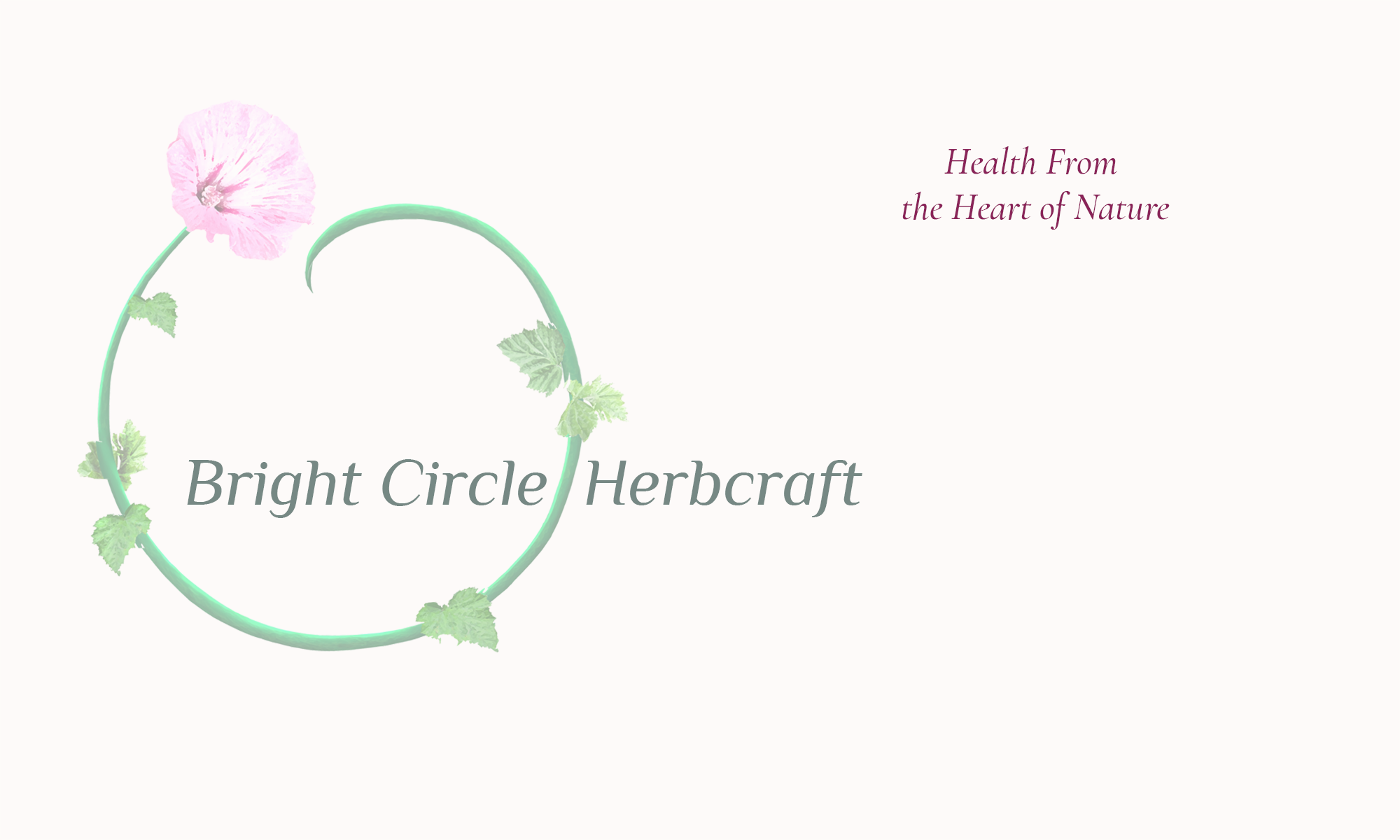


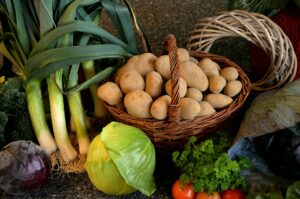
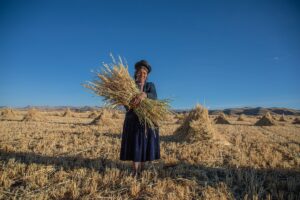

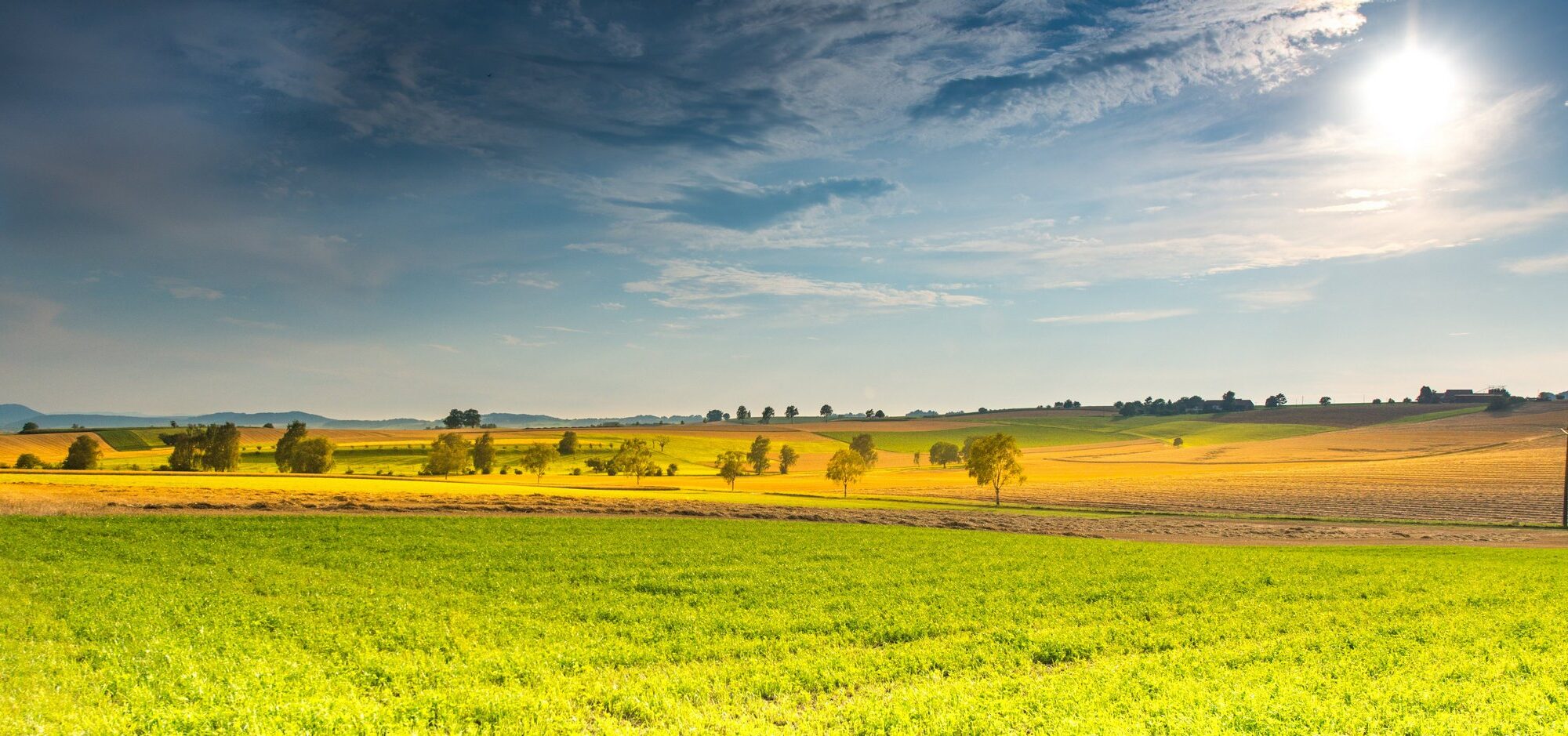




 within. To make any of these herbal infusions, use 1/4 to 1/2 cup of herb* to a pint of water. Plan to let it steep for at least 4 hours, up to overnight. Several of these are really bitter (and that’s part of the medicine!), so adding honey or stevia is fine. As you drink them, be sure to tune in to their taste and energies.
within. To make any of these herbal infusions, use 1/4 to 1/2 cup of herb* to a pint of water. Plan to let it steep for at least 4 hours, up to overnight. Several of these are really bitter (and that’s part of the medicine!), so adding honey or stevia is fine. As you drink them, be sure to tune in to their taste and energies.





